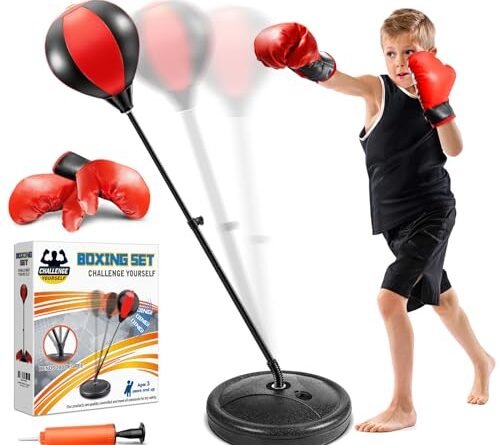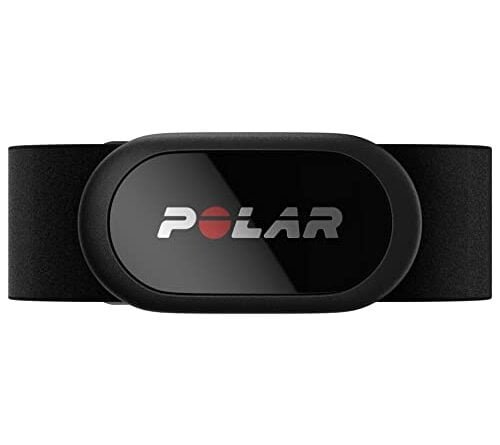
Hey there! Are you ready to learn how to use a speed bag like a pro? This step-by-step guide is here to help you master this awesome tool for boxing and fitness training. By using a speed bag, you can enhance your hand-eye coordination, speed, and rhythm. Let’s get started and have some fun while we’re at it!
Knockout Deals on Top Punching Bags!



Coach Anthony Boxing: The Proper Way to Hit a Speed Bag
Step 1: Set up the speed bag
First, you need to find a suitable location to hang your speed bag. Look for a space in your home or gym that has enough room for you to move freely around the bag. Ideally, you should have at least a few feet of space on all sides of the bag to avoid any obstacles that could interfere with your movements.
For example, you could set up your speed bag in a corner of your basement or garage where there is ample space. Alternatively, if you have a dedicated workout area, you can clear some space and designate it as your speed bag zone. Just make sure that the area is free from any sharp objects or furniture that could potentially cause injury.
Attach the speed bag to a sturdy platform or use a dedicated speed bag stand
Next, you’ll need to attach the speed bag to a sturdy platform or use a dedicated speed bag stand. If you have a suitable platform, such as a solid wooden beam or a metal frame, you can attach the bag to it using a swivel. Make sure the platform is securely fastened to the wall or ceiling to prevent any accidents during your workout.
Alternatively, if you don’t have a suitable platform, you can invest in a dedicated speed bag stand. These stands are specifically designed to hold speed bags and provide stability and adjustability. They usually come with a base that can be filled with sand or water to add weight and prevent tipping. Simply follow the manufacturer’s instructions to assemble the stand and attach the bag to the provided swivel.
Ensure that the bag is at the correct height for you to comfortably reach and hit it
Once your speed bag is securely hung or attached, you need to make sure it is at the correct height for you to comfortably reach and hit it. Stand in your fighting stance, with your hands up as if you’re ready to box, and adjust the height of the bag accordingly. The bag should be positioned at about eye level or slightly below.
To give you an example, stand in front of the bag and extend your arm towards it. Your fist should be able to hit the bag without fully extending your arm. Adjust the height accordingly until you find the most comfortable position. Remember, the goal is to be able to maintain a good rhythm and hit the bag accurately while keeping your feet grounded and your body balanced.


Step 2: Proper hand wrapping and gloves
Before starting, wrap your hands properly to protect your wrists and knuckles. To do this, start by laying out your hand wraps flat on a clean surface. Place your thumb through the loop at the end of the wrap and spread your fingers apart to separate them. Begin wrapping the wrap around your wrist, making sure it is snug but not too tight. Continue wrapping the wrap up towards your knuckles, crossing over the back of your hand and then weaving between your fingers. Make sure to wrap around each finger individually before securing the wrap around your wrist once again. Repeat this process until the wrap is fully used and your hand feels secure and supported.
Put on a pair of boxing gloves or hand wraps for added support and cushioning. This step is crucial in preventing injuries and providing a better grip while hitting the speed bag. To put on the boxing gloves, slide your hand into the glove, making sure your fingers are properly aligned with the glove’s compartments. Tighten the Velcro straps around your wrist to ensure a snug fit. The gloves should feel comfortable but not too loose. If you prefer using hand wraps instead, place your hand in the center of the wrap and wrap it around your wrist multiple times, crossing over the back of your hand and weaving between your fingers. Once your hand is wrapped, tuck the remaining wrap under the wrap around your wrist to secure it in place. Whichever option you choose, make sure your hands are adequately protected and ready for the workout ahead.
Step 3: Basic stance and footwork
Stand with your feet shoulder-width apart and slightly bend your knees. This stance provides a stable base and allows for better balance and mobility during your boxing workout. Imagine that you are preparing to engage in a light jog or a relaxed athletic position. Keep your weight evenly distributed between both feet, so you don’t feel off-balance during your boxing routine.
Next, maintain a relaxed posture. Avoid tensing up or hunching your shoulders. Instead, keep them relaxed and slightly rolled back. This will help prevent unnecessary strain on your upper body and allow for better flow of movement. Additionally, keep your chin tucked in slightly and your gaze forward, focusing on the speed bag.
Lastly, position yourself in front of the speed bag, ensuring that you have enough space to move around comfortably. You should have ample room to move side to side and forward and backward without any obstructions. This will allow you to practice your footwork and execute different boxing techniques effectively. Remember to adjust your stance and footwork as needed throughout your training to maintain balance and control.
Step 4: Start with the basic rhythm
To develop a rhythm, begin by lightly and consistently hitting the speed bag with your dominant hand. Aim for the center of the bag and focus on maintaining a steady beat. Use your wrist and elbow to control the bag’s movement, ensuring it bounces back towards you.
Start by standing in front of the speed bag with your dominant hand raised and ready. Position yourself at a comfortable distance, ensuring you have enough space to move your arm freely. As you strike the bag, hit it gently and with a controlled force, allowing it to rebound back towards you. This light touch will help you develop a smooth and steady rhythm. Focus on hitting the center of the bag consistently, as this will allow for more predictable bounces. Use a combination of wrist and elbow movements to control the bag’s motion and maintain a continuous flow. By practicing this basic rhythm, you’ll lay a solid foundation for more advanced speed bag techniques in the future.
Step 5: Progress to advanced techniques
Once you feel comfortable with the basic rhythm, it’s time to take your boxing skills to the next level by incorporating more advanced techniques. Start by experimenting with different punches such as hooks, uppercuts, and jabs. To throw a hook, pivot your lead foot and rotate your hips as you extend your arm in a semi-circular motion. This punch is great for targeting your opponent’s side or ribs. Practice throwing uppercuts by bending your knees slightly and driving your fist upward, aiming for your opponent’s chin. Uppercuts are effective for close-range combat. Lastly, perfect your jabs by extending your lead hand quickly and retracting it just as fast. Jabs are quick, straight punches that can help you maintain distance and set up more powerful shots.
As you incorporate these advanced punches, focus on controlling the speed and direction of the bag with your strikes. Experiment with different levels of power and speed to see what works best for you. Try to maintain a consistent rhythm throughout your session to improve your timing and coordination. Remember to keep your movements fluid and avoid tensing up. Pay attention to your footwork as well, as it plays a crucial role in maintaining balance and generating power. Practice moving around the bag while throwing your punches, staying light on your feet and pivoting when necessary.
Keep challenging yourself by gradually increasing the complexity of your combinations. For example, you can throw a jab followed by a hook, or a double jab followed by an uppercut. Mix up your punches and footwork to keep your training sessions engaging and dynamic. With consistent practice and dedication, you’ll soon master these advanced techniques and become a more skilled and confident boxer. Happy training!
Wrapping it Up
In conclusion, using a speed bag can have numerous benefits for your boxing skills and fitness level. By incorporating the steps outlined in this blog post, you can successfully enhance your hand-eye coordination, speed, and rhythm. Just start with the fundamentals and work your way up to more advanced techniques. So, get ready to enjoy your training sessions and see your progress soar!
What You’ll Need











